Artists’ Village
Magoksa Temple - Baengnyeonam Hermitage in Gongju
Everyone says Magoksa Temple is most beautiful in spring,
but I set out to go there in the sweltering heat of midsummer.
Many say the river flows around the mountain near Magoksa Temple
in an S-shape, similar to the yin-yang symbol (taegeuk),
so I hiked round and round looking for it.
At first I thought it would be over a certain mountain ridge,
but found it was not there.
Then I thought it would be in a certain valley,
but the winding river continued to flow deeper into the mountains.
I wondered if there was any remote place in Chungcheong-do Province
where the mountains aren’t high and the rivers are calm.
This area is called one of the “ten disaster-free places (sipseungji)” in Korea
that will never be disturbed by war,
a name that appears to be accurate.
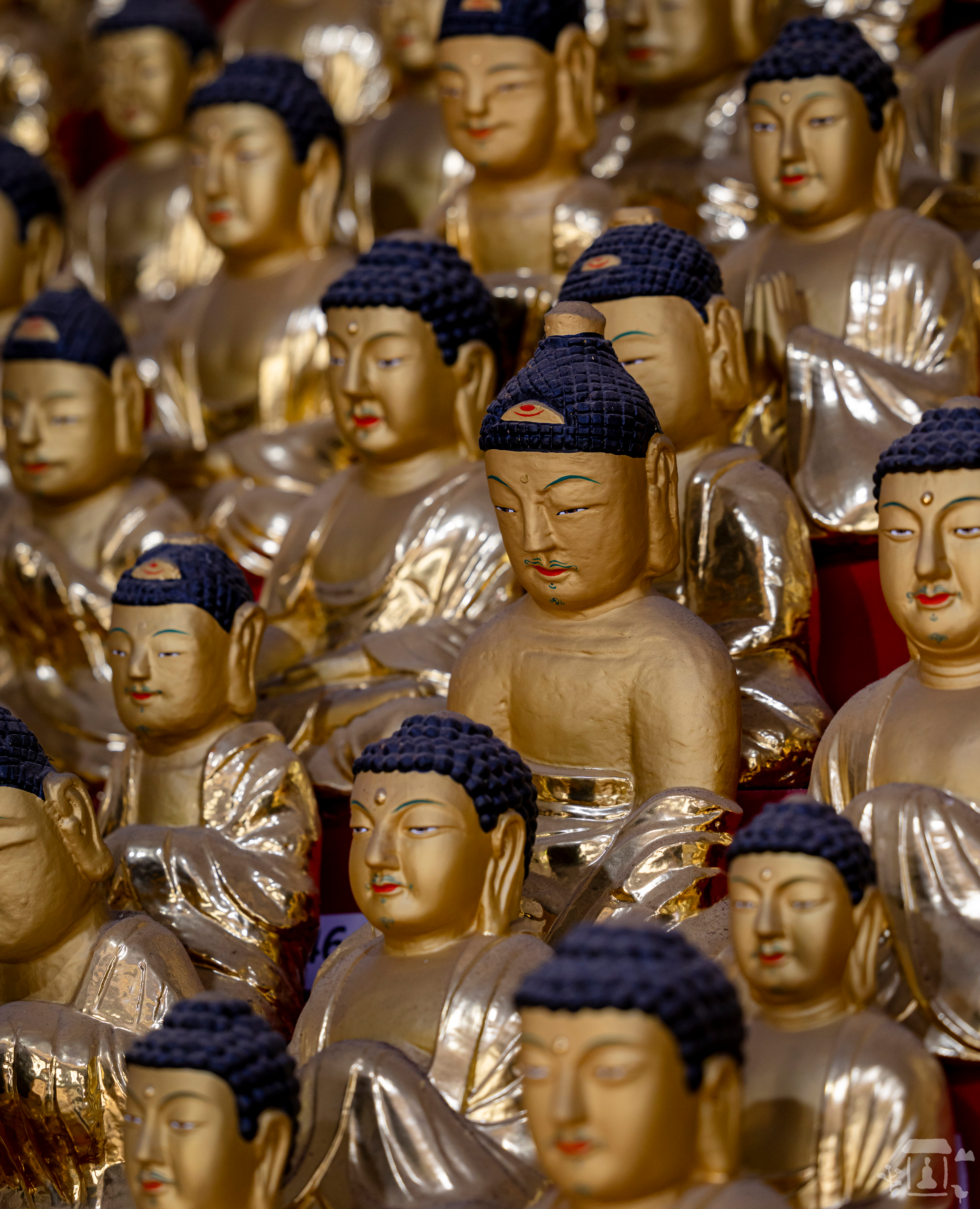
Under the Pagoda of Wind-Polished Radiance
Following the fragrant smell of grass, I passed through the temple’s Gate of Liberation and Gate of Heavenly Kings. I crossed a stream where I saw lotus lanterns floating in the water, and shortly after, I found the monk in charge of the temple’s general affairs waiting for us. Despite his busy schedule, he had volunteered to be our guide.
He pointed to the tower standing tall in the middle of the temple courtyard and said: “That pagoda is Magoksa’s five-story stone pagoda, which has been designated a national treasure. Its unique style features a pagoda-shaped gilt-bronze finial placed on top of the roof stone. It is said that it was built in the late Goryeo Dynasty in that form under the influence of Yuan China when Tibetan Buddhism was popular. The finial is made of copper, which does not rust or become damaged over time; it only shines more beautifully, earning it the Korean term ‘wind-polished bronze (pungmadong).’ This pagoda is the only one of its kind in Korea, and there are only three in the entire world.”
I looked closely at the pagoda. Even though the stones at the bottom had cracked over time, the gilt-bronze finial was just as shiny as if it had been made yesterday. I couldn’t help but be amazed that they had such technology 800 or 900 years ago.
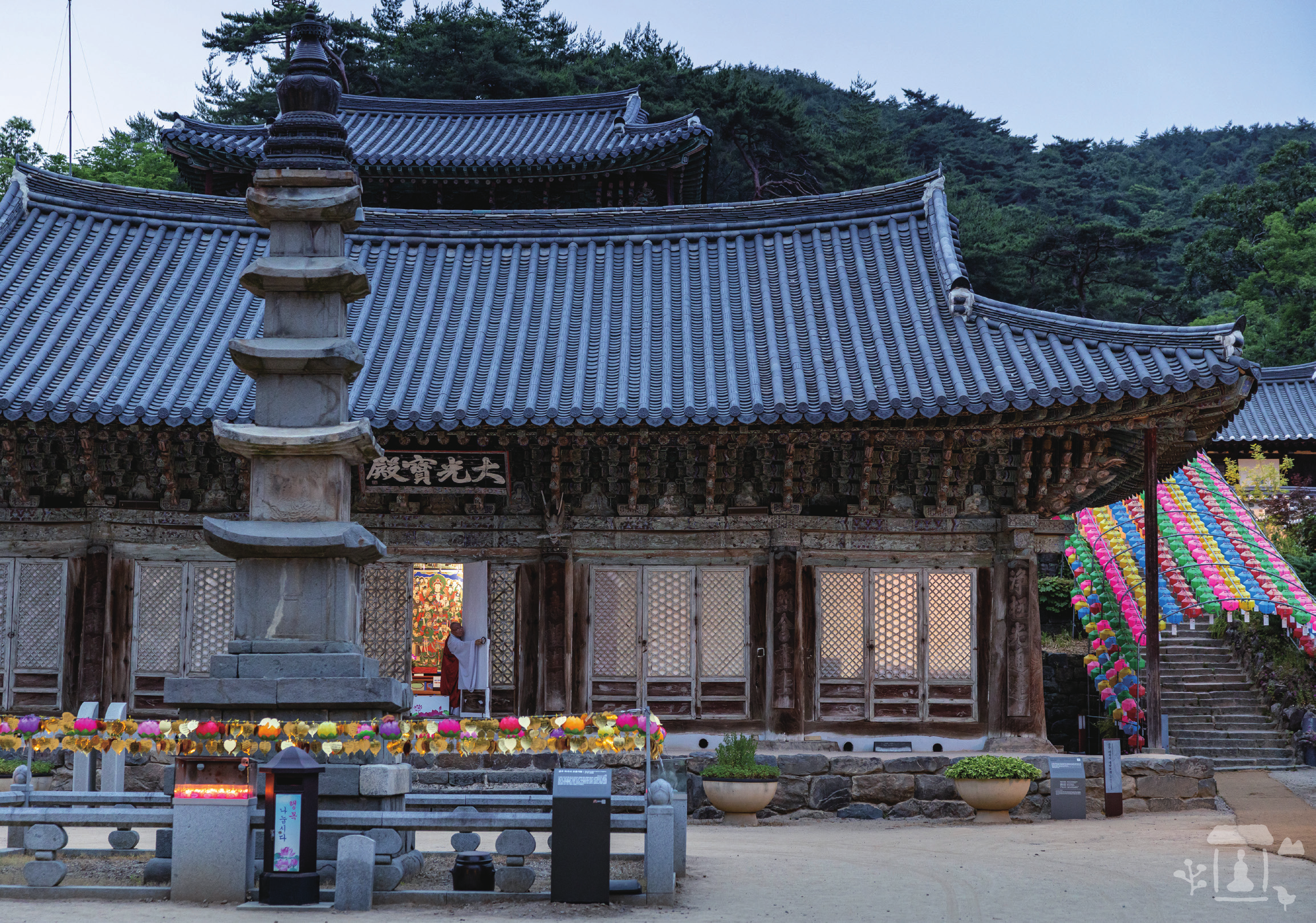
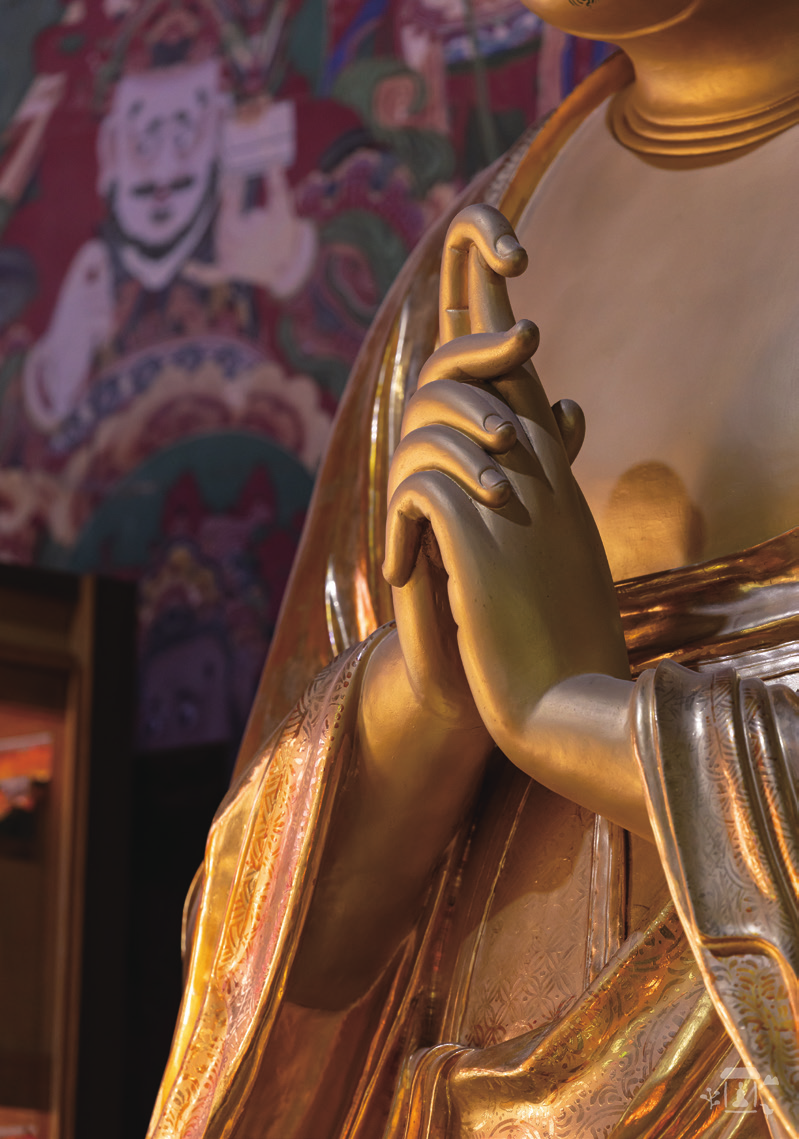
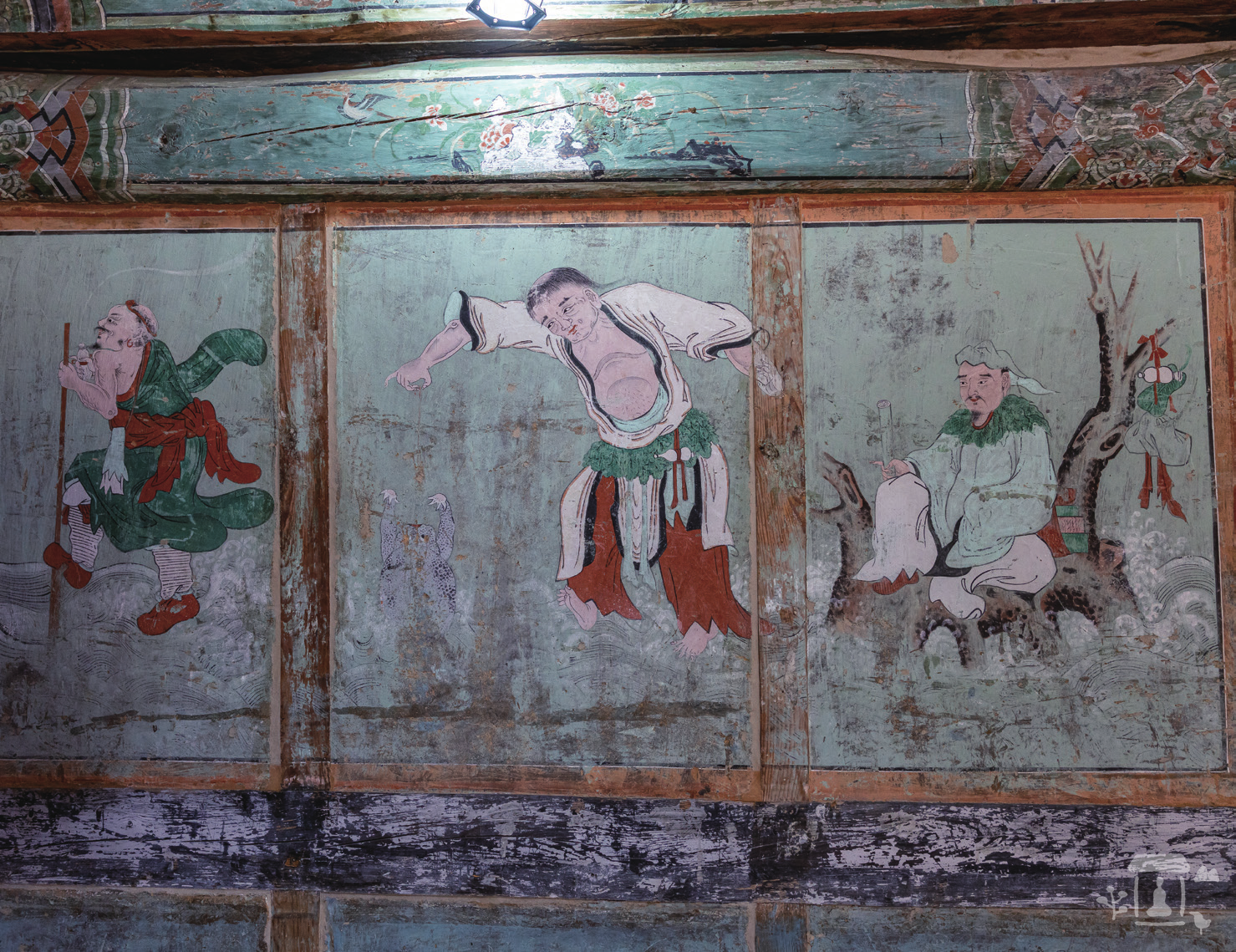
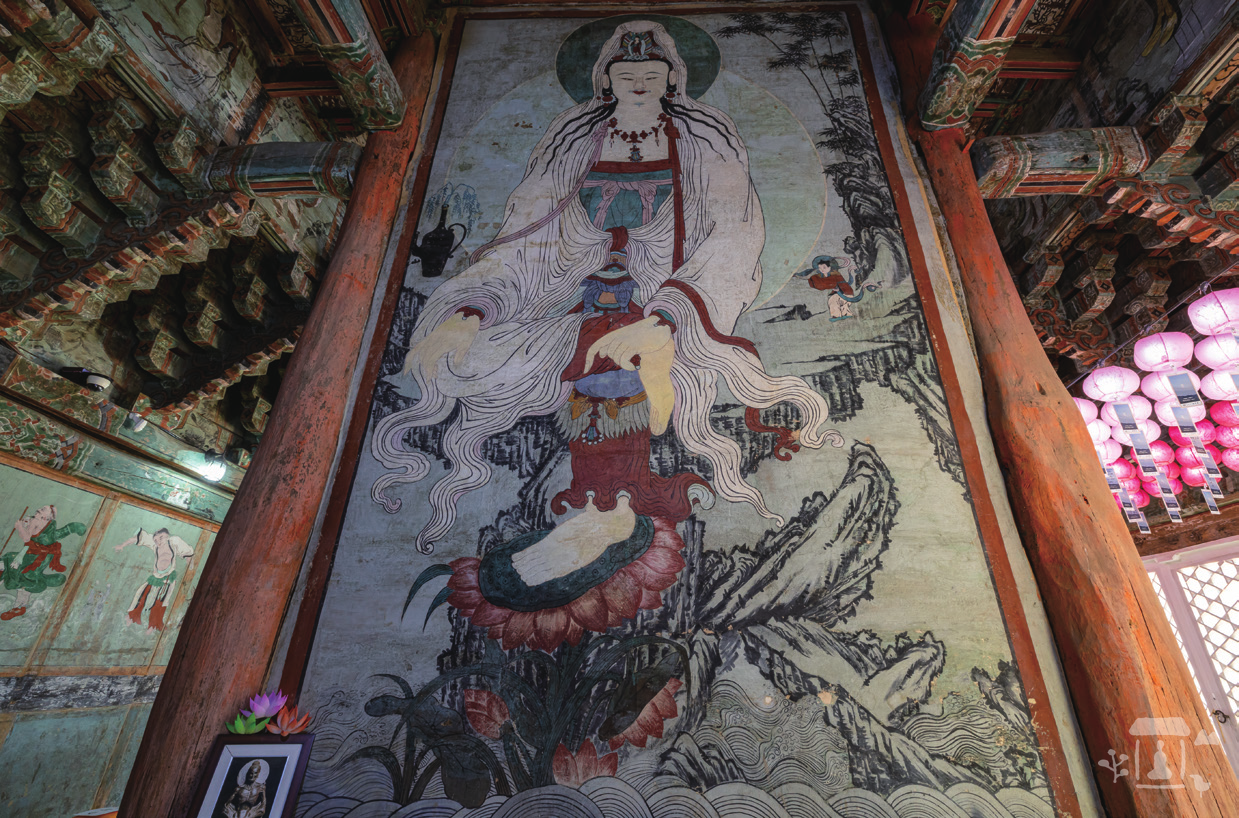
I followed our monk guide to Daegwangbojeon Hall, where I saw a dragon with long deer-like antlers biting a large carp whose eyes were wide open. Its appearance was humorous rather than scary. Inside the buddha hall, a statue of Vairocana Buddha was enshrined, his hands forming a very unique mudra. Vairocana Buddha’s mudra is commonly called the Vajra Mudra, which is usually made by the right hand wrapping around the left index finger. However, this Vairocana statue had his left index finger wrapped around by his right index finger. The inside and outside of the buddha hall were filled with paintings.
Our guide continued his explanation: “In our buddha hall, there are paintings of not only Buddhist sages and heavenly gods but also Daoist immortals, including buddhas, bodhisattvas, arhats, the four heavenly kings, Hanshan, and Shide. It is very unique. A monk who excels at painting Buddhist paintings is called a ‘geumeo,’ and a temple that specialized in producing monk painters is called a ‘hwaso temple’ (Buddhist art school temple). Magoksa has long been famous as one of the three great hwaso temples of the Joseon Dynasty, the other two being Yujeomsa Temple on Mt. Geumgangsan and Heungguksa Temple in Namyangju. That is why the murals painted in our buddha hall are outstanding in terms of skill, materials, and variety of colors.”
There weren’t just paintings. The spirit of the artists pervaded the temple. The name plaque on Simgeomdang Hall to the right of the five-story stone pagoda was written by Jo Yun-hyeong (pen name: Songha), a famous calligrapher of late Joseon. The name plaque on Daegwangbojeon Hall to its left was written by Kang Se-hwang (pen name: Pyoam), who was deemed one of the leading figures of Joseon’s artistic milieu during the 18th century. The name plaque for Magoksa Temple itself hung in the dormitory was written by the modern painter Kim Gyu-jin (pen name: Haegang). The name plaque on Yeongsanjeon Hall across the stream was written by King Sejo.
In addition, Ilhyeon Seunim—considered the best eosan (monk singer of beompae music) in modern times—once resided at Magoksa Temple, and the lineage of his beompae music was passed down to Beomjin Seunim, designated an intangible cultural asset. Therefore, Magoksa Temple is also considered the hub of Korean Buddhist music. It is truly amazing. It seems that all the talented people who are good at painting, calligraphy, and singing have come to Magoksa Temple at one point or other.
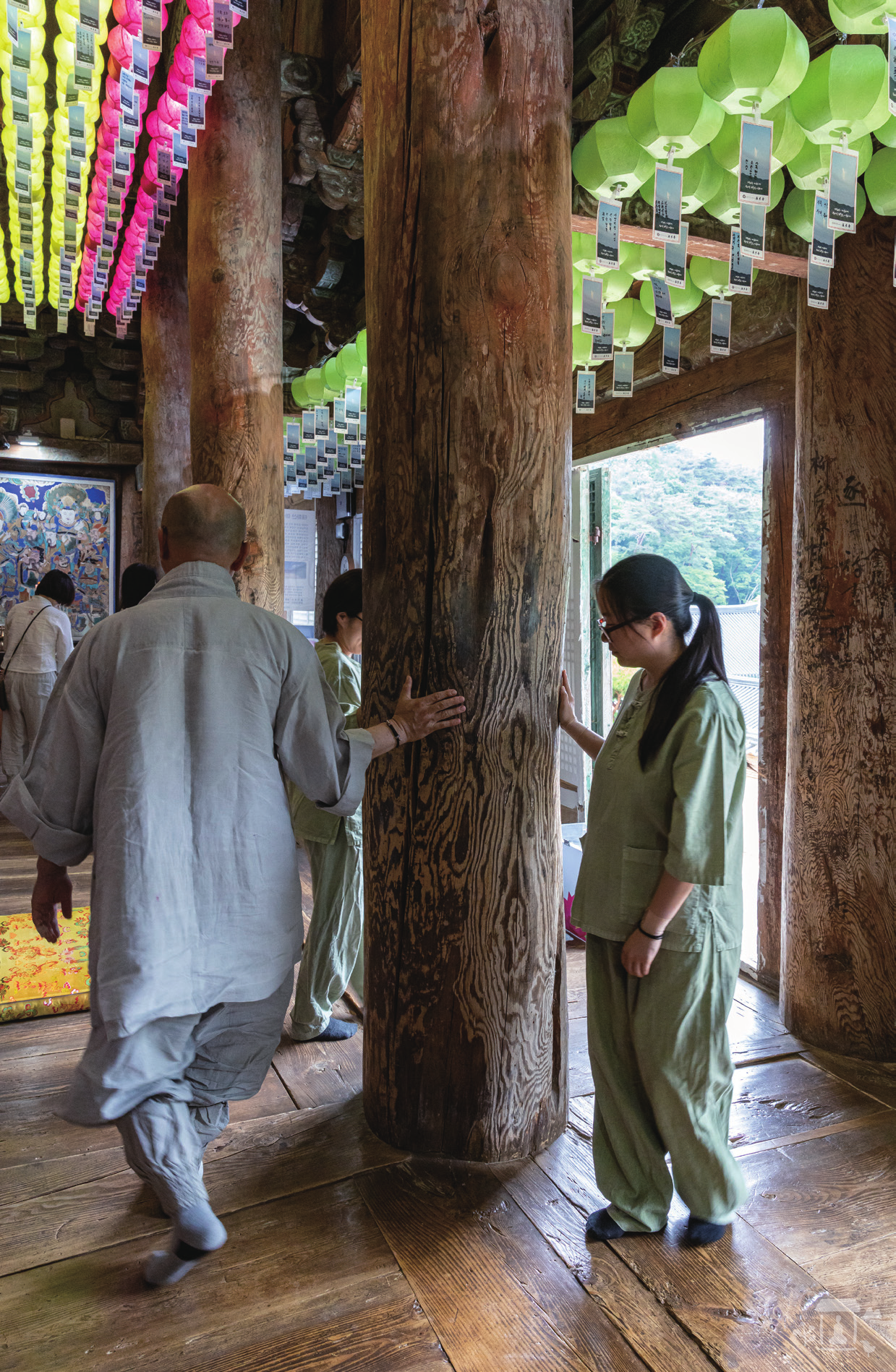
Silent Pillars, Stories of Legends
Guided by the Seunim, we paid our respects to the statue of Avalokitesvara Bodhisattva with long hair and white robes, who was enshrined behind the Vairocana Buddha, before heading up to Daeungbojeon Hall. Our guide pointed to the four thick pillars inside the buddha hall and said: “Those pillars are made from bush clover wood. It is said that if you hug and walk around them, you will have a son. Also, when you go to the underworld after death, King Yama will ask you how many times you circled the pillars in Magoksa’s Daeungbojeon Hall. It is said that those who have circled them many times are sent to paradise, and those who have never circled them are sent to hell.”
How many people must have circled those pillars, I wondered. The pillars were shiny in the places people had touched. I suddenly wondered about my own childhood growing up in the country, where the mountain behind my house was my own private playground. It was rare to even see a bush clover as thick as a thumb. After hesitating, I finally asked our guide as we left the buddha hall: “Seunim, is that really a bush clover tree?” He smiled and said, “I am not a botanist, but a monk, so my story is not based on science. It is a legend.” The group burst into laughter. That’s right. I didn’t come to Magoksa Temple to do academic research.
As I followed our guide toward the valley, I saw a sign that read, “The Rock on which Mr. Kim Gu Got His Head Shaved.” Our guide explained: “Mr. Kim Gu killed a Japanese officer who was involved in the assassination of Empress Myeongseong. He was imprisoned in Incheon Prison, eventually escaped, and lived in hiding at Magoksa Temple. At that time, he became a monk, received the Dharma name Wonjong, and resided at Baengnyeonam Hermitage up there.”
The Seunim suddenly stopped talking and looked at me, and asked. “Then did Mr. Kim Gu really get his head shaved on this rock?” The Seunim smiled broadly as if he found my embarrassed expression amusing, and said: “That too is a legend!” The group burst into laughter again.
We crossed the stepping stones and headed to the museum. The museum displayed precious relics, including the Magoksa Historical Records. Among them, one palanquin with delicate carvings and ornate colors particularly caught our attention. Perhaps noticing the group’s interest, the Seunim approached the palanquin and spoke:
“This is King Sejo’s palanquin. King Sejo (or Prince Suyang) and Kim Si-seup (pen name, Maewoldang) were friends since childhood. However, when King Sejo deposed his nephew King Danjong, Kim Si-seup got furious, burned all his books, and became a monk with the Dharma name Seoljam. When King Sejo heard that his friend Kim Si-seup had secluded himself at Magoksa Temple, he came to Magoksa. When Seoljam heard this, he fled to Muryangsa Temple in Buyeo to avoid King Sejo. When he failed to see Kim Si-seup even after traveling all the way to Magoksa, King Sejo went up to Gunwangdae Peak and blamed himself for his lack of virtue. He then gave the temple a name plaque reading “Yeongsanjeon,” after which he left the palanquin behind—in which he had come—in the temple, and rode an ox back to the palace.”
The Seunim stopped talking, looked at me again, and said, “Now, let me ask you another question. Did King Sejo really leave the palanquin behind and ride back on an ox?” The group answered loudly in unison: “It’s a legend!”
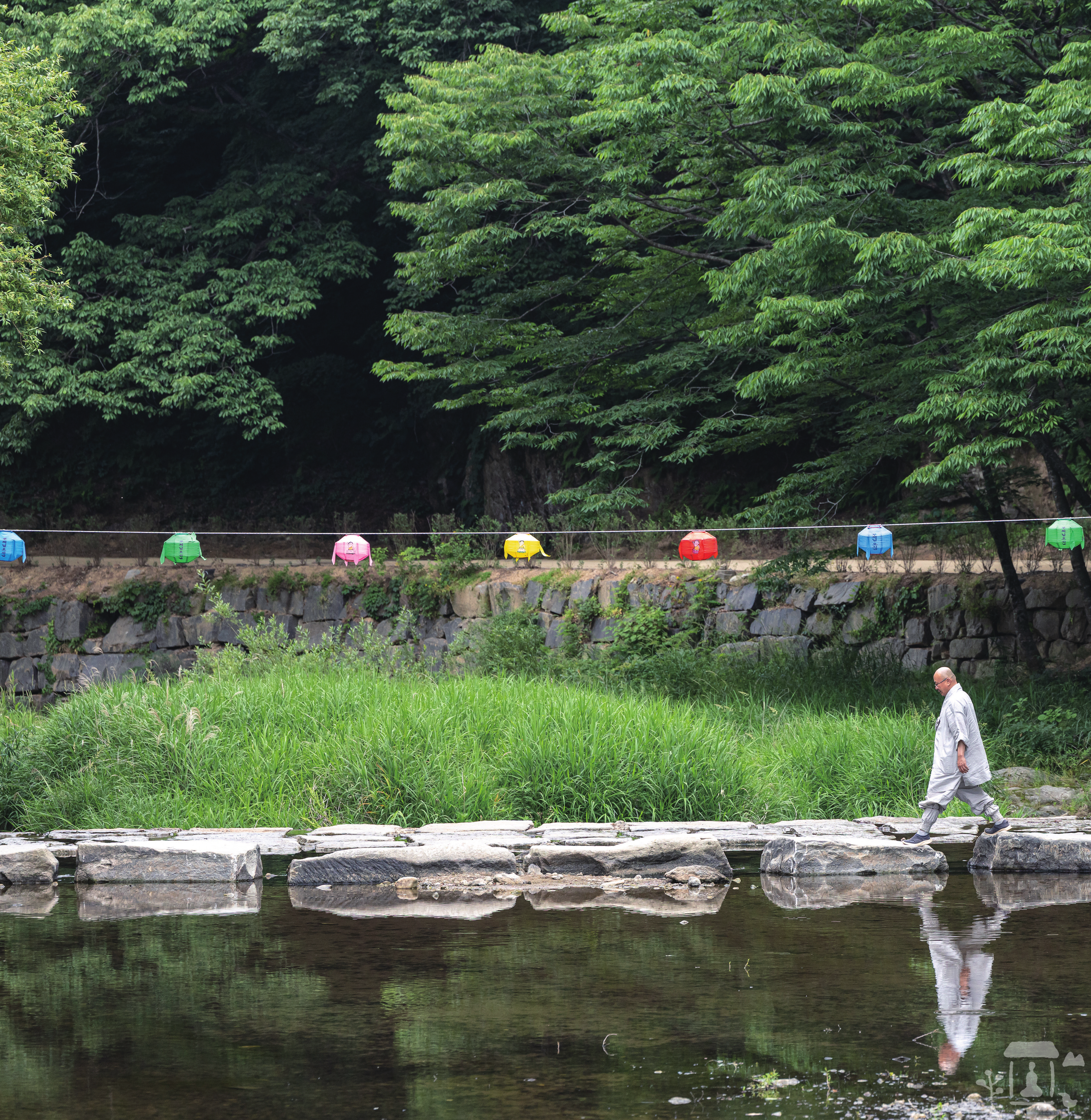
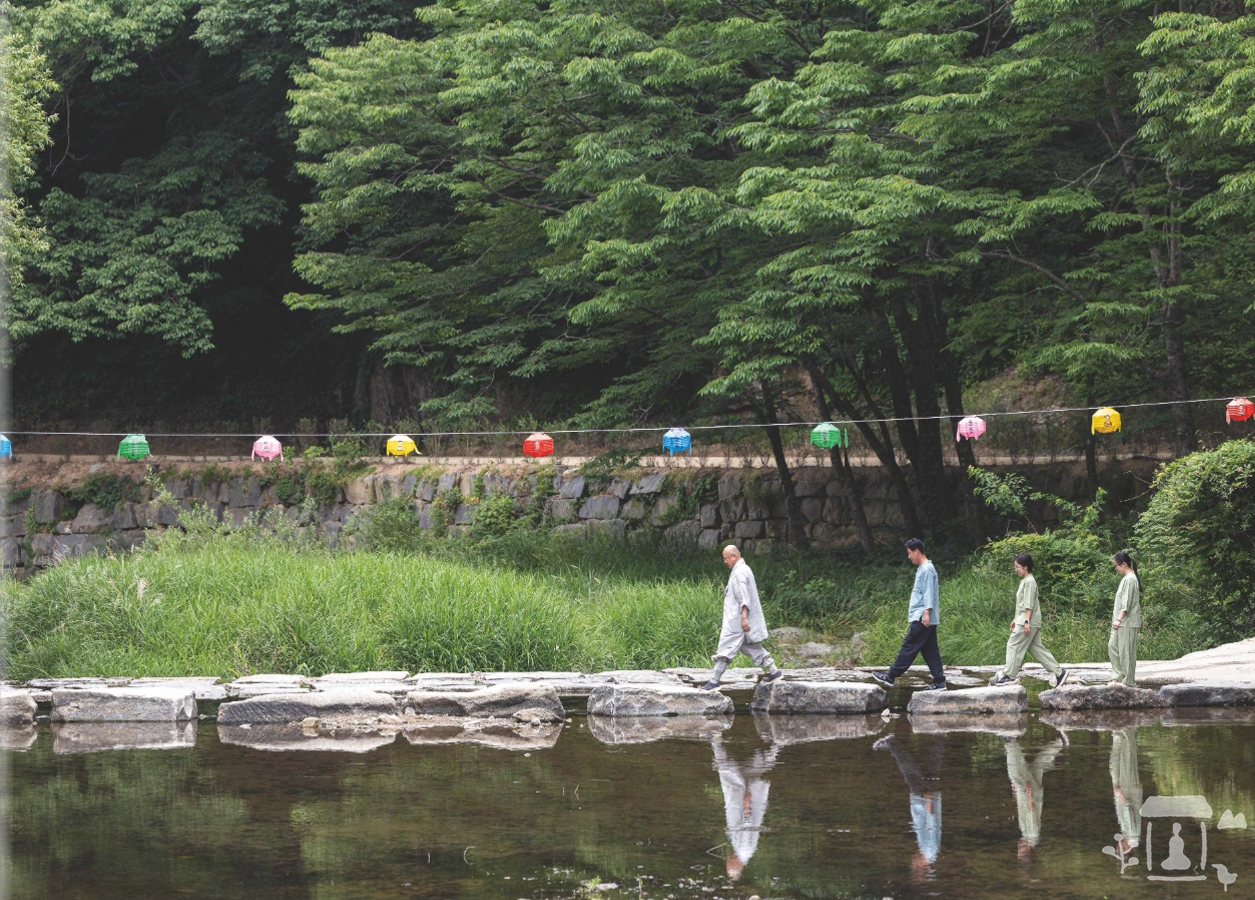
Silent Rock-Carved Buddha, a Milestone for the One Behind Me
Another burst of laughter. Suddenly, I remembered my childhood. On hot summer days even without electric fans, when the scorching sun would set on the mountain ridge, the whole family would gather on the wooden bench in the middle of the yard and burn fresh green plants to make smoke to drive away mosquitoes.
Every time we did that, I would snuggle my face in my grandmother’s dry bosom, and lie down on her thighs. My grandmother must have loved her nagging grandson, as she smiled and used a plastic fan made from a fertilizer bag to cool my face. Then she often relayed a bunch of stories. “My baby… A long, long time ago…”
Like a river of white stars flowing across the black sky, my grandmother’s endless stories continued all night, and nothing could have been more comfortable or fun.
Isn’t that what legends are? It’s okay if their origins are unclear, and it’s okay if they’re not true. Isn’t it enough to have fun for half a day by hearing an interesting story? But it’s not like they’re complete nonsense or complete lies.
Our Seunim was talkative and had a smile as beautiful as my grandmother’s, but our time together ended at the museum. I regretted leaving, but headed to Baengnyeonam Hermitage where Mr. Kim Gu had stayed. Whether it was because of the passage of time or because the hermitage had been renovated, unfortunately, I saw no trace that Mr. Kim Gu had ever been there.
The only thing that remained intact after all those years was the roughly carved stone Buddha on the cliff behind the hermitage. This caused me to reflect: “So this is where Mr. Kim Gu prayed for the independence of the country and the well-being of the people.”
In my efforts to follow the footsteps of Mr. Kim Gu, I felt a sense of empathy with him. I climbed up to Gunwangdae Peak and admired the scenery, and on the way down, I recited a poem often spoken by Mr. Kim Gu.
When walking through the snow-covered fields,
do not walk recklessly.
My footsteps today
will become a milestone for the one behind me.





